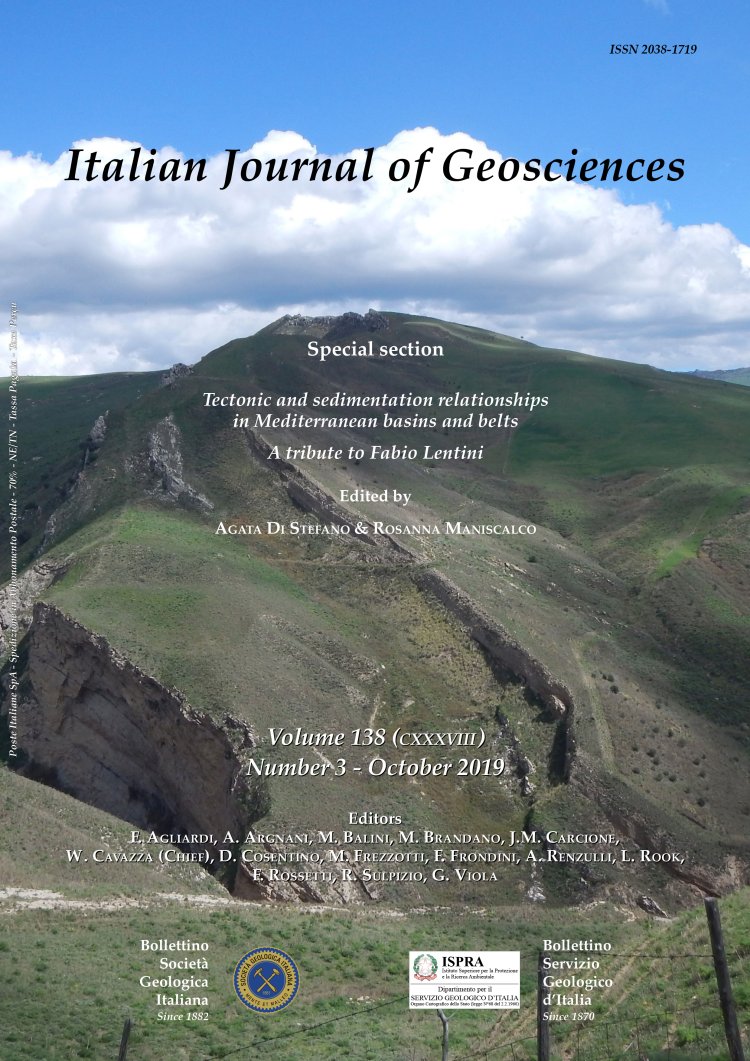

Syn-kinematic sedimentary systems as constraints on the structural response of thrust belts: re-examining the structural style of the Maghrebian thrust belt of Eastern Sicily
Robert W.H. Butler (1), Rosanna Maniscalco (2) & Patricia R. Pinter (3)
(1) Fold-thrust Research Group, School of Geosciences, University of Aberdeen, Aberdeen AB24 3UE, United Kingdom.
(2) Department of Biological, Geological and Environmental Sciences, University of Catania, Corso Italia, 57, 95129 Catania, Italy.
(3) School of Geosciences, University of Aberdeen, Aberdeen AB24 3UE, United Kingdom (present address: CGG Robertson, Tyn-y-coed, Llandudno LL30 1SA, United Kingdom).
Corresponding author e-mail: rob.butler@abdn.ac.uk
Volume: 138 (2019) f.3
Pages: 371-389
Abstract
Structural evolution of thrust wedges is influenced by syn- kinematic deposition ahead and upon them. It dampens uplift of synclines and promotes amplification of anticlines. High-resolution marine seismic images and analogue experiments indicate that emergent thrusts only form upper thrust flats (detachments, required to form far-travelled tectonic allochthons) when depositional rates at the thrust front are very low. These interactions are illustrated by re-examining tectonostratigraphic evolution of the Neogene eastern Sicily, a rotational thrust belt forming part of the Maghrebian orogen of the central Mediterranean. Existing interpretations of the thrust belt which invoke stacking of far-travelled thrust sheets (e.g. the "Sicilide") are incompatible with stratigraphic data that are better explained by deposition upon a simple emergent imbricate fan. The distribution of pre-kinematic successions reflects basin-structuring before Neogene thrusting, so that Mesozoic depositional units are unreliable guides for structural interpretation and associated palinspastic restoration. Deformation in the thrust wedge is marked by spaced anticlines that amplify together in an array, with individual structures active for at least 6 million years. The shortening across individual structures in the thrust wedge is rather low (a few km). Yet, reconstructing the palaeomagnetic rotation history of the thrust wedge requires >200km displacement, which must have chiefly localised on the basal detachment. This behaviour was strongly facilitated by the syn- kinematic thrust front remaining sediment-starved for much of its history. In contrast, during much of the Mio-Pliocene, sedimentation was ponded on top of the thrust wedge. In eastern Sicily, only in the Pleistocene, and briefly during the Tortonian, did significant sedimentation occur at the thrust front and this temporarily changed thrust localisation. Displacement partitioning reflects this inferred distribution of syn-kinematic deposition. Characterising these interactions is important for interpreting the structural style in thrust systems, especially when assessing the role of allochthonous thrust sheets.
Keywords
Get Full Text